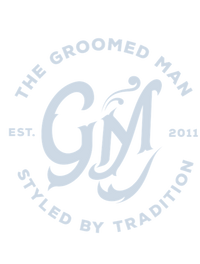A good shaving brush isn’t just a grooming accessory—it’s an investment in comfort and performance. Whether you’re a seasoned wet shaver or just starting out, the right brush can transform your shaving routine from a chore to a ritual. But with so many options on the market, how do you choose the perfect one?
Here’s what you need to consider before making your pick:
1. Bristle Material
The most important factor in any shaving brush is the type of hair used for the bristles. Each has unique properties that affect softness, water retention, and lathering ability.
- Badger Hair
- Best for: Luxury feel, superior water retention
- Pros: Soft tips, great for creating a rich lather quickly
- Cons: More expensive, not vegan-friendly
- Types: Pure, Best, Super, and Silvertip (the softest and most premium)
- Boar Hair
- Best for: Affordable entry into wet shaving
- Pros: Stiff bristles are good for exfoliation, softening with use
- Cons: Requires a break-in period, less water retention than badger
- Synthetic Fibres
- Best for: Vegan option, low maintenance
- Pros: Quick-drying, consistent performance, good for travel
- Cons: May lack the luxury feel of natural hair
- Horsehair
- Best for: Balanced softness and stiffness
- Pros: Cruelty-free (hair is collected during grooming), good lather
- Cons: Less common, sometimes a mild "animal smell" when new

2. Knot Size & Density
The knot refers to the bundle of bristles at the brush’s base.
- Small Knots (18–20mm): Agile, precise, uses less product—great for travel.
- Medium Knots (21–24mm): Versatile for most users.
- Large Knots (25mm+): Creates lots of lather quickly but can feel less controlled.
Density affects performance too—denser knots hold more water and create creamier lather, while less dense brushes can feel more flexible.
3. Loft Height
Loft height is the length of the bristles from the base to the tip.
- Short Loft: More stiffness and exfoliation.
- Long Loft: Softer feel and better for bowl lathering.
4. Handle Design & Material
Your brush handle should be comfortable to hold.
- Materials: Resin, wood, metal, horn
- Shape: Choose a shape that feels secure when wet.
- Weight: Heavier handles offer a premium feel but can be tiring for some.

5. Water Retention & Lathering Style
If you prefer face lathering, go for a brush with good stiffness and moderate loft.
For bowl lathering, a softer brush with a higher loft and excellent water retention is ideal.
6. Maintenance & Longevity
- Natural Hair: Needs thorough drying and occasional cleaning to prevent damage.
- Synthetic: Easier to maintain, resistant to mildew, dries quickly.
7. Budget Considerations
While high-end badger brushes can offer a lifetime of luxurious shaves, a synthetic brush offers excellent value, and is a great place for any beginner.
The Groomed Man recommendations
Beginner:

Luxury:
Synthetic




